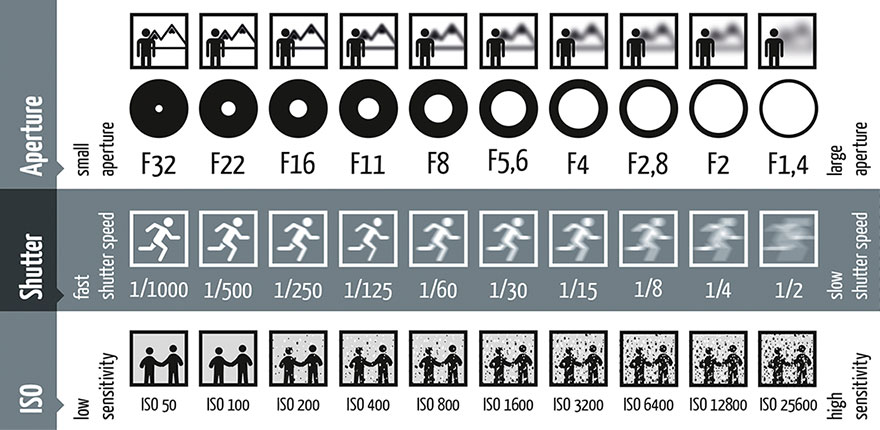There are three different ways to control how much light you camera takes in: The ISO, The Aperture, and The Shutter Speed. Think of the ISO as your film stock. If you were fortunate of enough to shoot film, you would know that the lower the ISO the clearer the image and the less light you would need. When I worked at Wolf Camera, I would recommend 100, 200, or 400 film stock to beginning photographers that were shooting day exteriors. However, shooting with minimal lighting, I would refer them to 800 or 1600 film stock. One thing to note about changing the ISO is that the higher the ISO setting, the more noise gets introduced to the image.
Aperture is defined as a space through which light passes in an optical or photographic instrument. So your camera’s iris is just like the iris in your eye. The aperture setting determines how much light hits your sensor. One thing to note about changing the aperture is that the lower the aperture, the more shallow the depth is. The higher the aperture, the greater the depth of field.
The Shutter Speed determines how fast the shutter opens and closes in the camera. The faster it opens and closes, the less time light can enter the camera which makes the image darker. The slower the shutter speed, the more light can enter the camera and the brighter the image will be. Shutter Angle is a term that is relative to shutter speed. The “shutter angle” is a useful way of describing the shutter speed relative to the frame rate. The larger the angle, the slower the shutter speed—all the way up to the limit of 360 degrees, where the shutter speed could become as slow as the frame rate. Click the links below for references:
https://en.wikipedia.org/wiki/Rotary_disc_shutter#/media/File:Moviecam_schematic_animation.gif
https://en.wikipedia.org/wiki/Rotary_disc_shutter#/media/File:ShutterAngle.png
At the other extreme, the shutter speed can be made arbitrarily fast by decreasing the angle. One thing to note is that the shutter speed shouldn’t be a go to for controlling light, but a last resort. The reason I say this is because when you have slower shutter speeds, motion blur is a lot more prevalent. Faster shutter speeds takes the motion blur away. You should use shutter speeds artistically to drive your story.
Here is a cheat sheet that should help you understand ISO, Aperture, and Shutter Speed:
Photocredit to: http://www.demilked.com/photography-shutter-speed-aperture-iso-cheat-sheet-chart-fotoblog-hamburg-daniel-peters/

